1870s Mormon Baptistry Uncovered on Provo City Center Temple Site
The earliest known baptistry of The Church of Jesus Christ of Latter-day Saints in Utah County, located 45 miles south of Salt Lake City, was discovered recently on the new Provo City Center Temple site. The temple is being built from what remains of the 1898 Provo Tabernacle. A fire in 2010 gutted the historical structure.
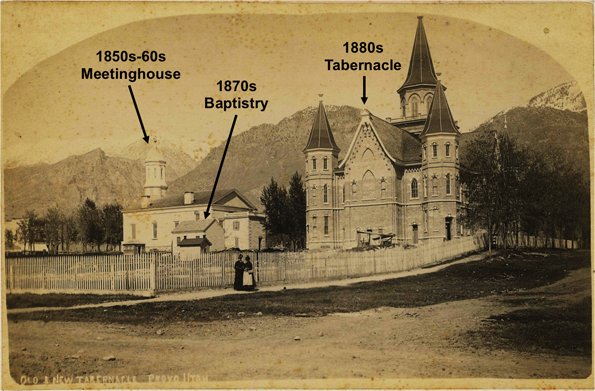

The baptistry, with its five-by-nine-foot font, was built around 1875 and is a significant discovery, said Dr. Benjamin Pykles, a Church History Department curator. “This one city block spans nearly the entire history of the Church in Utah with the construction of the original meetinghouse in the 1850s and 60s, the baptistry in the 1870s, the tabernacle in the 1890s, and now the temple under construction.”


The font floor has three layers of wood laid in crisscross fashion and was held together with nails and screws. As the screws were tightened, the wood was pulled together to form a floor solid enough to hold water. The excavation unearthed a water pipe used to fill the font and a drain to empty it. In early photographs of the baptistry a chimney is shown, which archeologists believe vented a stove that heated the water to make the facility usable year-round. Large quantities of painted plaster fragments were also discovered, revealing the original sky-blue color of the baptistry’s interior walls.


Church historical records indicate the font was used from the mid-1870s to 1906 and perhaps longer. A 1912 photograph of the site shows the baptistry building had been razed by that time.
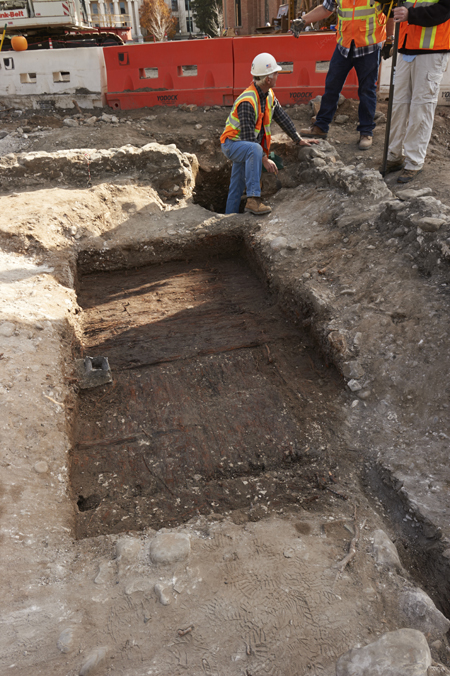

Church historians identified the location of the early baptistry using fire insurance maps dated from the 1880s to 1910. The maps were used to make a record of the structures and their locations to determine a building’s risk of fire.
Richard Talbot, director of the Office of Public Archeology (OPA) at Brigham Young University, speaking of the baptistry site, said, “This was hallowed ground to them [Mormon pioneers]. It was the first place the saints could be baptized in a real font rather than in a cold river or lake.”
“They [Mormon pioneers] wanted the baptistry to be the best it could be,” said Deborah Harris, historical archeologist with OPA. “They treated the site with reverence and respect.”


Pykles said the tabernacle site is important because it includes all the dimensions of Latter-day Saint worship. He explained people were baptized to become members of the Church in the 1870s font. Following baptism they would worship as a community in the nearby meetinghouse, completed in 1867. With the present-day construction of the temple, the third dimension of Latter-day Saint worship temple ordinances will occur once it is complete.
The temple site includes not only the limestone foundations of the early meetinghouse and the baptistry but the foundation of the 26-by-28-foot caretaker’s cottage as well, Harris said. The caretaker of the site watched over the tabernacle and baptistry.
The Church constructed at least four baptismal fonts earlier than the one in Provo; three were located in Salt Lake City, and one was installed in the St. George Temple. (See the fact sheet.)
In 1902, President Joseph F. Smith wrote an article in the local newspaper urging local priesthood leaders to build a baptismal font in every major settlement of the Church. The number of baptismal fonts in the Church increased sharply following this admonition.


Pykles said that in addition to the site excavation, 3D scanners have been used to create a highly accurate and precise 3D record of the excavated foundations for the early meetinghouse and baptistry.
The Church commissioned Brigham Young University’s Office of Public Archaeology to help excavate the buried remnants of the buildings. The work has also provided a hands-on opportunity for BYU students.
Lively Fiction Keeps Kids Reading
It’s a continual problem to find books for kids that are so good that it keeps them reading clear to the end. Here are more outstanding books for ages nine and older that will likely keep them reading deep into the night! Only the last book is better suited for ages seven to ten. This concludes my outstanding fiction series that includes several types of genre.


Janitors: Secrets of New Forest Academy, by Tyler Whitesides, has the same protagonists fighting against the BEM (Bureau of Educational Maintenance) as they attempt to save schools. When Spencer is sent to the New Forest Academy, he believes that at least he’ll be safe there. But what he discovers will have you turning pages clear to the end! Hopefully there’s another book planned in this exciting series.
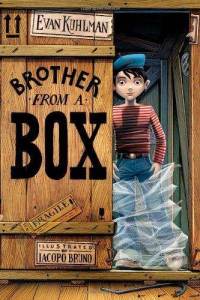

Katerina’s Wish, by Jeannie Mobley, is historical fiction at its best. It’s 1900 and Katerina’s family just moved to Colorado from Bohemia where they hope to find a new life. But Papa finds work deep in the coal mines and times are tough. Katerina discovers a way out but it means hard work for her too. There is also a magical folklore element woven throughout the book that beacons back to Bohemia.
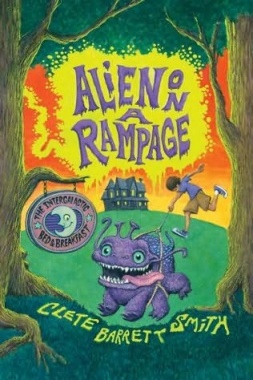

Liar & Spy, by Newbery award winner Rebecca Stead, is full of twists and mystery. Georges has just moved into a Brooklyn apartment building where he meets another boy, Safer. Safer recruits him into his small spy club where Georges must spy on a mysterious neighbor upstairs. As the story unfolds, you’ll begin to wonder who are the good guys and who are the bad. This could be another winner!
Secrets of Shakespeare’s Grave, by Deron R. Hicks, is another possible winner! The story has Colophon and her brother heading to England to search for a family treasure which could link them to solving the age-old mystery: who really wrote the plays of Shakespeare. This story might take a few chapters to get into, but it is well worth it! It’s well written and is filled with mystery, secret passages, decoding and antique mausoleums. Each chapter heading is a phrase from one of Shakespeare’s plays or sonnets. And these chapters also begin with pencil and ink illustrations by Mark Edward Geyer.


About Average, by another very successful author, Andrew Clements, is a quick read with only 122 pages but packed with a message every tween should read. Jordon feels so average. She feels like she can’t do anything above and beyond what will make her stand out. Until one day, something happens, and calls on every fiber within her to overcome what she is about to face.


Busting the Myth that Obstructs Personal Thanksgiving
Years ago, our Thanksgiving table was bountifully-laden and beautifully decorated. However, the heavy spirit of an elderly relative I’ll call Ted did not reflect the joy of the season. Wanting to lighten the mood someone said, “I have an idea. Let’s tell each other one thing we are grateful for today.”Without pause, Ted responded, “What do I have to be grateful for? All I have is pain and doctor visits.”
We sat in stunned silence. Ted had a loving wife who saw to his every need, children and grandchildren who cared about him, a lovely home. He could afford the best medical care, food, medication, or service that might increase his well-being. What could possibly render him so blind to his blessings? Could it be the same myths that sometimes blind us to ours?
I’m using this little vignette because it frames the message I most want to convey as we approach the season of Thanksgiving. If we are not mindful, the great blessings of our lives can be eclipsed by myths and thought distortions and a focus on negatives. The effect can be like holding pennies over our eyes so that eternally inconsequential and relatively small things block out the brightness of the “sun” of truth that really matters.
In this article I want to focus on one enduring myth that can especially obstruct the ability to feel gratitude: there is never enough.
Uncovering the Roots of the”There’s never enough” Myth
In my case, the root of this my this fear. When I fall into fear (I hardly ever recognize when I choose it; it feels instead like I fall into it) I get totally caught up in worry that I don’t have enough time to do what needs to be done; I don’t have energy to do even the essentials; I don’t have enough money for my own needs, much less enough to help all who so desperately need help. Most troublesome, I worry that I’m not spiritual enough, not strong enough, not good enough. After a long life of striving it seems evident I haven’t been wise enough, compassionate enough, kind enough. And no matter how hard I’ve tried, I just haven’t done enough!
I believe Satan is the author of the “never enough” myth. What could better serve his purposes than to convince us it is true? What could better halt our path of progress than the roadblock of believing we don’t have whatever it takes to move forward? But the “never enough” myth is never true unless we take God out of the equation! If we keep Him and His word in the center of our lives, gratitude spills out spontaneously.
Busting the Myth with God’s Words
God made this world, and He made it ENOUGH. Psalm 33:5 tells us, “The earth is full of the goodness of the Lord.” D&C 104:17 says: “For the earth is full, and there is enough and to spare; yea, I prepared all things.”
When we focus on the Lord, we know He offers enough of everythingbecause He either provides it to begin with or He intervenes to makes up the difference. Let’s look at the scene in Matthew 14 where Jesus took five loaves and two fishes, blessed them, and gave them to the disciples to distribute to the hungry multitude. To begin with, no one could argue with the fact that two fishes and five loaves were not enough foodto nourish five thousand hungry men.
(And look at the reference below: the many women and children needing to be fed were in addition to the five thousand hungry men!) But the Lord MADE those two little fishes and five little loaves enough, and more than enough: “And they did all eat, and were filled: and they took up of the fragments that remained twelve baskets full. And they that had eaten were about five thousand men, beside women and children” (Matthew 14:19-21).
When the Lord provides the feast, it will not be almost enough, or barely enough; He provides an overflow! When He changed water into wine, He didn’t make barely enough to fill the needs, but more than enough!
Gratitude Based On the Sufficiency of the Lord
My thesis here is that self-sufficiency is only possible when we depend on He who is all-sufficient. I’m saying that our thoughts should be constantly stayed on His plenty, not on our own inadequacies.
Overflowing gratitude can only be based on the fact that He is enough, not that we are enough. In Psalm 34:1-3 we read, “I will bless the Lord at all times: his praise shall continually be in my mouth. My soul shall make her boast in the Lord: the humble shall hear thereof, and be glad. O magnify the Lord with me, and let us exalt his name together.”
In reality, we are never enough without His help, without our connection to Him. This is one of the great lessons we are here to learn. In John 15:5 the Lord said, “I am the vine, ye are the branches: He that abideth in me, and I in him, the same bringeth forth much fruit: for without me ye can do nothing” (emphasis mine).
If we do not choose to stay connected to the constant nourishment of the vine, we can do nothing of spiritual significance; we will not be “enough.”However, if we choose to stay connected, He makes up the difference and we can be instruments in His hands to accomplish great things. Elder Bednar, in a direct broadcast address, said that after his calling to the holy Apostleship he realized that he of himself is utterly incapable of being an apostle. He said he is not smart enough, not spiritual enough, not strong enough. Only with the constant help of the Lord can he do it. And so it is with all of us.
The Lord gives us assignments, but doesn’t require that we run off and accomplish them by ourselves. He has asked us to be yoked with Him so that His power works through and with us to accomplish His purposes. Any lack comes from lack of remembering the need to keep our connection with Him, to keep in the yoke, to keep connected to the vine.
Gratitude for the Lord’s Strengthening Power
When Alma the Younger and his brethren reunited after their great success in bringing many of the Lamanites to belief in Christ, one of them accused Alma of being carried away to boasting. Alma countered with the following important distinction: “Yea, I know that I am nothing; as to my strength I am weak; therefore I will not boast of myself, but I will boast of my God, for in his strength I can do all things; yea, behold, many mighty miracles we have wrought in this land, for which we will praise his name forever” (Alma 26:12). Can’t you feel Alma’s gratitude flowing out of those words?
Alma recognized the reality that he was weak; he even acknowledged that he was “nothing.” But he didn’t stop there, and neither should we. Satan wants us to just sit down and mope about our own inadequacies.
He wants us to totally forget the rest of Alma’s equation, also found in Philippians 4:13, “I can do all things through Christ which strengthens me.”
Alone, without His help, we are not “enough.” But the Lord gives us enoughand makes us enough when we turn to Him. In fact, we are each given exactly what we need to fill whatever mission the Lord wants us to fill. He gives us what we need the very moment we need it (usually not be forehand), and He will never let us down.
In Moses 1:39 the Lord explains that His work and His glory is to bring to pass the immortality and eternal life of man. Part of the way he accomplishes this work is through the enabling power of the Holy Ghost that helps each of us fill the measure of our own creation. His prime priority is to make up the difference for our weaknesses . . . to not leave us alone or comfortless . . . to give us all we need to succeed at whatever tasks He gives us to do.
And so it is in every facet of our lives: When we are weak, He is strong. When we are lacking, He strengthens and fortifies us.
With the Lord’s help, Peter even walked on water! But the minute he let fear into his heart he began to sink. He cried out to the Lord and the Lord raised him up. And together they walked on water back to the boat. So even when we momentarily are sinking in fear thoughts, if we cry out to Him, he will raise us up.
Danger Signs
It is easy to get pulled into “never enough” mentality when we try to walk on water the Lord has not assigned us to walk on: When we try to “do it all,” try to run faster than we have strength, or try to please everyone. Such patterns are motivated by ego rather than the Spirit. Ego feeds on the praise of men and can never get enough or be enough. Ego makes us feel compulsive, driven, constantly seeking prizes that never prove to be enough and do not edify the soul. Ego pulls us into perfectionism and tells us we are not enough unless we’ve “arrived.” Since that goal is not for this life, it keeps us in a constant state of “not enough” and obstructs gratitude like nothing else!
Counter Fear with Gratitude
When we choose thoughts of gratitude for God’s constancy instead of thoughts of fear, we are aware of the Lord’s over-arching under-girding support and care. We remember the little things that make life good and we recognize the Lord’s intervention in our behalf. We remember that the Lord always “prepares the way.”
Nephi set the example of faith in the Lord’s help when he said, “I will go and do the things which the Lord hath commanded, for I know that the Lord giveth no commandments unto the children of men, save he shall prepare a way for them that they may accomplish the thing which he commandeth them.” (1 Nephi 3:7)
What a good goal to say to ourselves daily, “I’m grateful today for the strength the Lord lends me. Whatever I am lacking He makes up for. He prepares the way. There is enough time for whatever He wants me to do, because He would never require the impossible.”
What God does require is that we learn and progress line upon line. Here a little, there a little. He works in degrees and would have us work from one degree to another. Orderly step-by-step manner is His way. Satan’s tools are fear, shame, and inappropriate guilt, all of which we should avoid when dealing with ourselves or others. We can cast Satan out. We can follow the Lord’s pattern of encouragement, light, building on strengths, repenting, and moving forward. We can choose faith over fear. We can choose to be strong in the strength of Lord. We can depend on Him and praise His Holy name. This season of Thanksgiving is a perfect time to make the choice to bust the “never enough” myth and live in gratitude instead.
Thanks to Debbie Bake for her incredible proofreading and editing skills.
Check out my website darlaisackson.com for information on my books.
Turning Hearts: Cousins Unaware
They met as volunteers at the Washington DC Family History Center — two researchers, steeped in their own quest yet eager to assist others — and totally unaware that their service would lead them into a tangle of branches stemming from a common family tree.
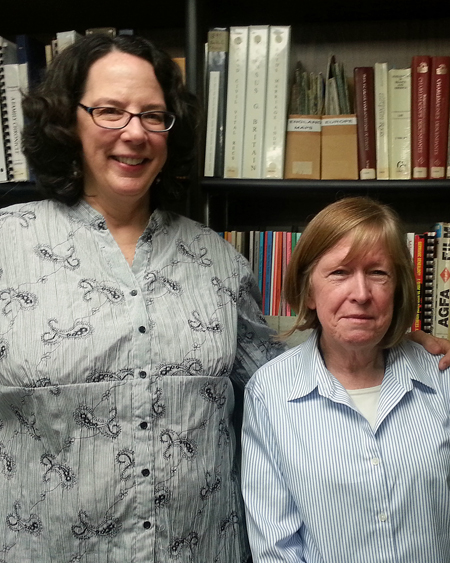

Two years ago, Mary Ahearn responded to a call for volunteers needed on Saturday afternoons. A year later, Cindy Finelli began to work on Tuesday evenings. Mary joined Cindy’s shift after scheduling problems arose on Saturdays, and the two quickly found intriguing familial coincidences. Both were Irish, which was a pleasant surprise, but when Mary talked about a recent visit to an ancestral home in Collinsville, Connecticut, both were shocked.
Collinsville is a “company town,” home to the Collins Company AXE factory which manufactures picks, axes and similar tools.In the mid-1800’s, the factory recruited immigrant workers and many Irish settled in this tiny village in northwest Connecticut. Among them were the Flaherty and Lynch families– ancestors of Mary and Cindy, respectively.Determining this to be a huge coincidence, the two volunteers were elated yet puzzled. Was it remotely possible that their families may have known each other?
One eveningwhen Mary and Cindy were bemoaning the notorious misspellings in census records, Marysaid she couldn’t understand why she could not find her Flahertys. She knew they had emigrated between 1843-1850, after the potato famine. When Cindy opened the 1850 census online, Mary found her Flaherty ancestors living next door to Cindy’s Lynch family. The families were neighbors!
Mary and Cindy’s Collinsville roots led to months of joint research and countless conversations. Yet there were too many questions and no firm answers.
A turning point in establishing kinship came when they attended a lecture, “DNA: The Latest Tool for Genealogists,” and both took an AtDNA (autosomal DNA) test. Their results showed a match to each other — they are cousins! But how? And through which family? Although DNA testing can prove there is a genetic link, it does not determine how people are related or who the common ancestor is. This is where the science of biology meets the research of genealogy: both are needed to positively establish a family relationship.
Cindy was stunned to see that her at DNA results included a match to Donald Ahearn. Mary’s family lore related a connection to this same Donald Ahearn, a Catholic priest in Chicago and son of an Olympic athlete who was born in Athea, County Limerick. Athea is also the birthplace of Mary’s great-grandparents, Bridget Ahearn and Patrick Ahearn. (Yes, two Ahearns from the same town married each other!) A Y-DNA test taken by Mary’s brother did not match Father Donald’s Y-DNA. Thus, Mary’s link to Father Donald is through her great-grandmother, Bridget Ahearn.
Mary and Cindy initially supposed that they may be related through the Flaherty and Lynch families in Collinsville. But in a most unexpected twist, they discover that theyshare a common branch on the Ahearn family tree, through Bridget, with Father Donald Ahearn as their proven cousin.
For Cindy and Mary, untangling the branches of their family trees is an ever-unfolding and perpetually commingled puzzle. Was it coincidence or destiny that they both chose to volunteer at the Family History Center? “The coincidences involved in us being related and meeting at the FHC are just too amazing,” Mary said. “I am not surprised that I immediately liked Cindy!”
Surprises abound in family history work, as do joyful discoveries of newly-found cousins. What could be waiting for you?
Carol Kostakos Petranek is a Co-Director of the Washington DC Family History Center and a Volunteer at the National Archives in Washington, D.C.
What the Turkey Saw


BYU Plays Major Role in Discovery of New Alzheimer’s Risk Gene
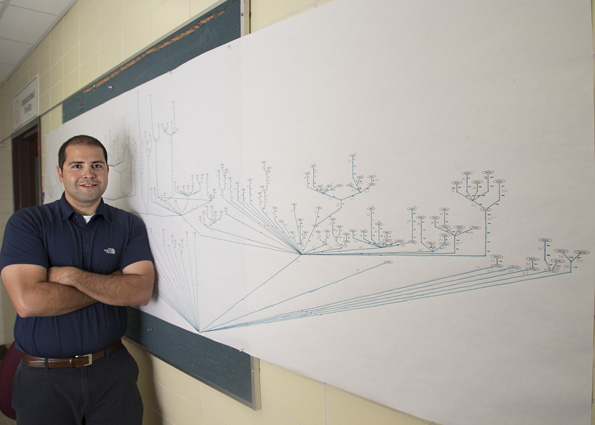

Latter-day Laughs
****
If you have a laugh you’d like to share, send it to la*************@me**************.com“. Be sure to include your name, city and state (or country).
****
Be Ye Therefore Perfect
When my daughters were small, we had charts for everything-job charts, prayer charts, school charts, etc. One day, my 5-year-old, Amy, said, “Mommy, I thought Heavenly Father was perfect.” I explained that He was, so she asked, “Then why does He have to have a chart?” I looked puzzled. She continued: “When we pray, we say Our Father whose chart is in Heaven….'”
Jayna Friberg Cleamons
Salt Lake City, Utah
****
Audience Participation
A young man in our ward was having difficulty blessing the sacrament and had to repeat the prayer a second time. We asked our 2 -year-old son to refold his arms and explained why. When the young man faltered again and had to start over, our son insisted loudly: “Just say amen!”
Brooke Greenstreet
Norfolk, Virginia
****
Good Times
My 6-year-old grandson, Colin, thinks I’m old. He once asked me when I’m going to die. This led to a discussion about death. I explained that dying is just returning home to Heavenly Father. He thought for a long moment and said: “Yes, those sure were good times up there in Heaven … it will be great to get back there again.”
Jeri Gilstrap
Porteville, California
****
Creativity At Home
Our bishop once related how one time our Relief Society president showed up late to ward council. She was looking a little hurried, and her hair was slightly disheveled. After the meeting she apologized and explained that her blow dryer had refused to work that morning so her husband had used the leaf blower to dry her hair instead.
Brent Hawks
Hollister, California
****
Nothing But the Truth
Sister H told of recently visiting her son and his family. As she was getting ready for the day, her young grandson was watching intently and asking lots of questions. As she put some lotion on her face he asked what that was all about. She explained that as you get older, you get these wrinkles and the lotion helps with the wrinkles. Later in the day he was sitting on her lap and they were having a very pleasant conversation when the grandson reached up and gently touched a spot on her cheek and said: “Grandma, I think you need some more lotion.”
Brent Hawks
Hollister, California
****
Block Party
I once received a call from the stake executive secretary, Brother Smith. “Brother Rogers, President Briggs would like to meet with you at noon at the end of your block. Will that be OK for you?” I hesitated for a moment, and then replied: “Sure. President Briggs and I are neighbors; at which end of the block would he like to meet?” She laughed, and then clarified: “No, I meant the end of your meeting block.”
Rusty Rogers
Mission Viejo, California
****
Trish Manwaring is an assistant editor of Meridian Magazine.
True Meanings
“Mom, could you make me some Cock-a-doodle soup?”
“Some what?”
“You know. Some Cock-a-doodle soup.”
“Oh…Cup-o-Noodle soup?”
“Yes. Some Cock-a-doodle soup.”
Well, of course I made my darling four-year-old some Cock-a-doodle soup. I boiled up a pot of water right there on the spot, so excited to say the words “Cock-a-doodle soup” again. How fun is that?
I’ve decided these childhood vocabulary slip-ups are one of motherhood’s simple pleasures. I can’t stand to correct them. They add so much color and spice to what could easily be just plain, blah, boring soup.
For example, we have “girl cheese sandwiches” at our house. If you’re really hungry you can have a “woman cheese sandwich,” but you have to finish the girl cheese first.
Forty years ago my oldest brother misheard the word automatic to be “auto-magic.” After all, supermarket glass door, garage doors, elevator doors, traffic lights– are all magical to a small child, right? Well, the magic stuck. To this day my own little ones will describe the hand faucets in public bathrooms, you know the ones with the teeny sensors instead of twisty knobs, as being “auto-magic.” It’s like sprinkling a bit of Pixie dust in mundane places you’d rather not be.
Just this week I have been asked how to spell “Table of Continents” (and it was not for a geology assignment), and if I would please share my box of Ginger Mints. Why does the Junior part of my Mints sound so dull and flat now? Ginger’s so much more fun to say. Ginger. Ginger. And I think my four year old may be on to something–they really should make a ginger flavor. Mmmm…ginger dipped in chocolate… (Now that’s another post.)
And it’s not just children who mishear things. It happens to us adults too. My good friend belted out what she thought was the title classic “One Ton Tomato” for years until quite recently. It’s hardly her fault–I’m not sure how many Americans know what a Guantanamera is. But every time I hear the tune while standing in an auto-magic elevator, I can’t help but giggle as I picture a tomato the size of an elephant perched on top of a piano and wondering why this ultra-suave latino is serenading it.
My mother thought her granddaughter was saying “Big Ol’ Cup. I want my Big Ol’ Cup!” So she retrieved a very large drink for the little miss before she realized she was saying “Big Girl Cup” a.k.a., not a bottle.
It’s amazing what we think we hear. Which is why I want to be very clear with my children on a few particular subjects. I never want my compliments and praise to be misinterpreted as animal sounds or worse, bypass their ears completely and come across as a Peanuts Gang adult–mwah mwah mwah mwah.
I want them to know how much I love them, how much God loves them, and how important it is to love others. (You know the song and scripture “Love one another, by this shall men know ye are my disciples…” Well, I used to think “Shallmenow” was one word and it must be closely related to the marshmallow. When you’re six you’ll do anything to tie candy into a Sunday School lesson.)
I want the rules of our house to be clear. I want a feeling of unconditional love to never come across as muddled. I don’t want them to miss the true meaning of life, even if we are mixing up the meaning of a few words here are there.
So when I say, “Guess how much do I love you” and instantly they stretch out their skinny arms and yawn, “Thiiiiiiiiiiis much!” I can’t help but smile because their response is, well–
Auto-magic.
Gags: Fishers of Men


What a Difference a Year Makes
When President Monson announced the change in missionary age, my 18 year old daughter jumped up and threw her arms around my shoulders. She hugged me so tight I could barely breathe. She held on until I felt liquid dripping down my neck– her tears of joy.
Throughout the church, members rejoiced at this inspired announcement. We imagined countless positive effects of this change. I imagine more young men being worthy when it’s time to serve a mission; I imagine fewer missionaries being distracted while on their missions. I see elders being motivated by enthusiastic sisters. I see the missionary force growing. Tremendous blessings are in store for the investigators the missionaries will teach as well as for the missionaries themselves.
As excited as I am about the missionary opportunities for young women, I thought it appropriate to first celebrate the blessings that will come to the young men.
Allowing young men to serve at 18 eliminates the “lost year.”
The year between high school and college is an easy time to get “lost.” In high school a young man’s parents keep an eye on him. As a missionary his mission president, while providing considerably less scrutiny than his parents, still keeps an eye on him. The transition from a lot of scrutiny to a little scrutiny is a great opportunity for young men to learn to govern themselves. However, the transition from high school where an adult who knows all a young man’s comings and goings to college where nobody monitors his comings and goings can be so dramatic that some youth will get lost.
Not only will youth get lost if if they are not on somebody’s radar, they can also get lost if they have no direction. When a mission is a year off, some young men may procrastinate their preparation and thus, lose focus. However, when youth go directly from high school to a mission they have a clear direction. Because a mission is so imminent, they may be diligently preparing for a mission while still in high school.
More worthy missionaries
Young men can also get “lost” during that year between high school and college when they get a steady girlfriend.
Prophets have repeatedly counseled young men not to go steady with a young lady before their mission. President Benson said, “Avoid steady dating with a young man prior to the time of his mission call,” (Nov. 1986 Ensign).
President Hinckley said, “Do not get too serious too soon. You have missions ahead of you, and you cannot afford to compromise this great opportunity and responsibility. ” (Priesthood session October 1997 conference, reported in Ensign November 1997.)
There is plenty of logic to this counsel: Emotional intimacy is the precursor to physical intimacy, so if a young man gets too serious with a young lady before his mission he increases the risk of becoming immoral, and thus compromising his ability to go on a mission.
As logical as this counsel is, it seems to be very difficult to follow. High school sweethearts are as entrenched in American culture, even Latter-day Saint culture, as the palmetto plants are in my Florida backyard. Going through high school without a ever having girlfriend can seem like going through high school without ever attending a football game.
Latter-day Saint Youth are already so different from the world. We don’t dress the way the world dresses. We don’t listen to the same music, don’t dance the same way, don’t use the same language, don’t watch the same movies, don’t drink the same beverages, and on top of that, we don’t even date the same way.
Young men who found it hard to be so different from the world, and felt waiting until 21 to have a girlfriend was just too long to wait sometimes ignored the prophets’ counsel and decided to go steady before their missions. These are the young men who were vulnerable to the very temptations the prophets were trying to warn against in the first place.
Perhaps such young men will feel that waiting until age 20 to get a girlfriend is a goal they can reach. Rather than just throw up their arms and say, “that’s unrealistic” they will feel it is possible to heed the prophets’ counsel and serve honorable, worthy missions.
More effective missionaries
Often a young lady will be a good influence and will actually persuade a young man to choose missionary service. This is a win-win if the young lady is truly a friend.
However, if that young lady becomes a girlfriend a young man risks being so distracted as a missionary that he can’t focus on the work. He’s still focused on a girlfriend back home. Furthermore, when he gets the inevitable “dear John” it will de-rail him for who-knows-how-long, interfering further with his ability to be an effective missionary.
This additional logic further helps us understand the prophets’ counsel to wait until after a mission to get a girlfriend.
Better marriages
Young men who wait until until after their missions to go steady can make better decisions about marriage.
Again, the prophets foresaw this advantage.
“When you are young, do not get involved in steady dating. When you reach an age where you think of marriage, then is the time to become so involved. But you boys who are in high school don’t need this, and neither do the girls.” (Priesthood session October 1997 conference, reported in Ensign November 1997.)
Virtually no young man has reached the age where he thinks of marriage before his mission, which means an obedient Latter-day Saint young man won’t get his first girlfriend until he returns from his mission.
Some adults panic at the thought of their son waiting to get a girlfriend until after his mission. They fear he will be afraid of girls, or not have the experienced needed to date seriously. To them I want to reply, “Peace, be still.”
Young men are far more prepared to date seriously at 20 then they are at age 18, (or Heaven forbid, 16). When a young man returns from a mission, he has already had the opportunity to date casually before his mission. Now he is home and he chooses the right type of girl to date seriously, and the timing is right, because he is at an “age when he can think of marriage,” the chances of them succeeding as a couple are far greater than when the timing is off because he is not at an age when he can think of marriage.
You are probably realizing that lowering the age of missionary service will also lower the age when young men return from their missions, and lowering the age when young men return from their missions may lower the age when they start dating seriously, and lowering the age when they start dating seriously, could lower the age when they marry.
I don’t know for sure, but maybe that was part of the plan all along.
JeaNette Goates Smith is the author of the newly released, UnSteady Dating: Resisting the Rush to Romance. Her website for adults is www.unsteadydating.com and the website for youth is www.unsteadydating.wordpress.com





















